The 7 Best Folding Kayaks for Hitting the Water Anywhere

"Hearst Magazines and Yahoo may earn commission or revenue on some items through these links."
Kayaks are fantastic to play with on the water… And just as big a hassle to deal with off of the water. A rigid, 16-foot hardshell boat that rips through open water so efficiently that it makes you feel like an aquatic species can put a serious strain on your relationship while it’s filling up a quarter of your garage or half your apartment.
Folding kayaks offer a best-of-both-worlds solution for folks who don’t have enough storage space to comfortably stash a boat at home, but love to glide downriver in a high-performance hardshell. A folding kayak will fit in the trunk of your car, so it’s easy to transport and won’t take up a ton of space at home. It’s a win-win, so long as you pick the right one. Luckily, that’s why we’re here.
Fun in The Sun: Best Portable Grills ● Best Inflatable Paddleboards ● Best Fishing Gear
Best Folding Kayaks
Best Overall: Oru Beach LT Sport
Best Value: Tucktec 10
Best For Beginners: Oru Lake
Best Recreational: Pakboats Puffin Saco
Best Tandem: Oru Haven TT
The Expert (Joe Jackson): I have tested kayaks for a living since 2008 for publications like Paddler Magazine, Canoe & Kayak, and Outside. In that time, I’ve personally tested over a dozen folding kayaks in conditions ranging from an inadvisable open ocean night paddle off the coast of Washington, to trying to fold one up while surfing in heavy beach break in San Francisco. I got my hands on an early prototype Oru kayak, which I kept in the back of an old Toyota Camry for three summers to hedge my bets against missing out if an impromptu flatwater adventure came my way.
The Expert (Chantae Reden): I have over two decades of kayaking experience. I’ve circumnavigated small islands in Fiji and French Polynesia by kayak and have paddled through the waters of Hawaii, California, Western Australia, and Tonga. My grandparents were once long-distance outrigger canoe racers, and my grandfather still has a penchant for coaching my paddling technique. I’m also the founder of The Salt Sirens, a website dedicated to ocean sports. My writing has appeared in outlets like Travel + Leisure, AFAR, Vice, Lonely Planet, and more.
How We Selected The Best Folding Kayaks
These recommendations are based primarily on our many years of experience and expertise testing and reviewing folding kayaks. For the few folding kayaks we haven’t tested personally, we interviewed kayak designers, boaters, and retail shop owners to help find options that kayak enthusiasts trust. We also read folding kayak reviews from expert sources like Paddling.com and Paddling Magazine, as well as user reviews on popular kayaking forums and retailers.
One option didn't make the cut because it doesn't go on sale until 2024, but we're very intrigued by what it will likely bring to the market. The Trak 2.0 kayak promises to push the boundaries of what a folding kayak can be, with an incredible rigidity-to-weight ratio that should unlock excellent performance. The kayak can be shifted from high-rocker- to low-rocker-mode on the fly, altering the performance characteristics of the vessel. While it will be expensive (more than $3,800), it could likely be one of the best high-performance folding touring kayaks on the market.
Beach LT Sport
In the decade since it created the original origami-style folding kayak, Oru has honed and refined its design, dialing in its boats in with both usability and performance detail that translate into a better kayaking experience.
The 12-foot-one Oru Beach LT Sport hits the sweet spot for a day-touring boat, balancing steady tracking and high maneuverability. It folds and unfolds easily, and has a stout but easy-to-use feature set that will leave even the pickiest paddler happy.
It also features smart accessories like a hearty rail system that spans the tops of the gunwales to accommodate fishing poles, snack trays, or camera gear. With high performance and smart, subtle details, the Oru Beach LT Sport should please most paddlers, from first-time kayak owners to demanding hobbyists.
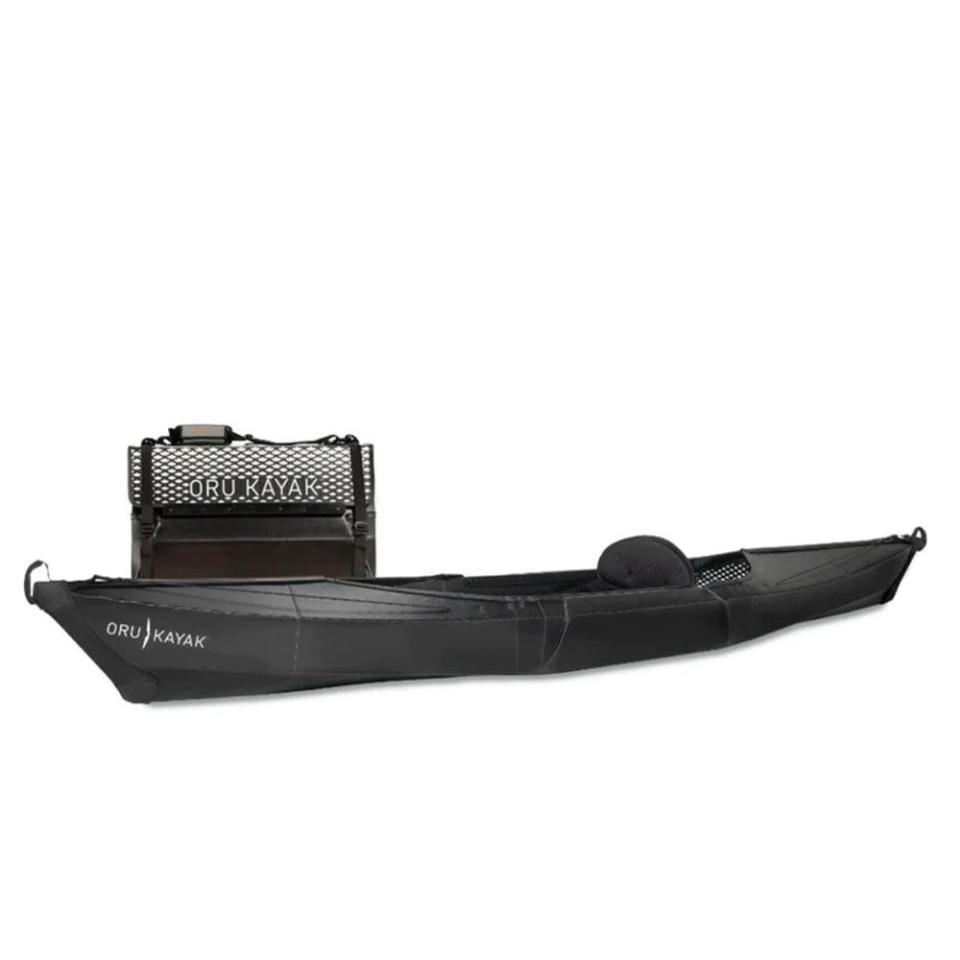
Beach LT Sport
orukayak.com
$1499.00
10
The Tucktec 10 is a great entry level boat that costs considerably less than its nearest competitor. It’s lightweight at only 25 pounds, and features an intuitive folding design.
With an open cockpit and casual design, we wouldn’t recommend it for a race or an open ocean crossing. However, we’d happily paddle the Tucktec around a mellow lake—it's perfect for a beginner learning the ins and outs of kayaking. And since it’s so easy to carry, it might even convert a hesitant boater who’d normally balk at the hassle of having to strap a kayak to the roof of their car.

10
amazon.com
$399.00
Lake
The Lake is Oru’s most bare bones, inexpensive, and beginner-friendly option. At a mere 17-pounds, you can easily carry it as far as you need to, even if your water source is at the end of a hike.
The short, 9-foot frame has fewer folding points than other, longer Oru kayaks, which makes it relatively easy to assemble. The Lake boasts ample primary stability thanks to its large 32-inch width, which is a great confidence building attribute for beginner paddlers. Its intuitive assembly process and high stability make the Oru Lake an ideal folding option for anyone looking to get into the sport.

Lake
rei.com
$499.00
Puffin Saco
Pakboats’ Puffin Saco is an excellent option for day trips in choppy water. Its gunwales sit high, 10 inches above the waterline, reducing the chance of small waves coming over the side and flooding the boat.
Inflatable bladders along the inside walls of the deck add a level of rigidity and buoyancy to the boat, so you can lean deep into turns and put the craft on its edge. That’s helpful for new paddlers who may lean too hard, but also makes the Puffin Saco a very playful boat for experts.
The Puffin Saco is perfect for day-tripping, with a light and highly trackable 12.5-foot frame. Plus, it only weighs 20 pounds, so you can carry it long distances for packrafting and other hybrid hiking/boating adventures.
The Saco delivers high-end performance in an easy handling, straightforward package, which makes it ideal for devoted rec boaters and aspiring touring kayakers alike.
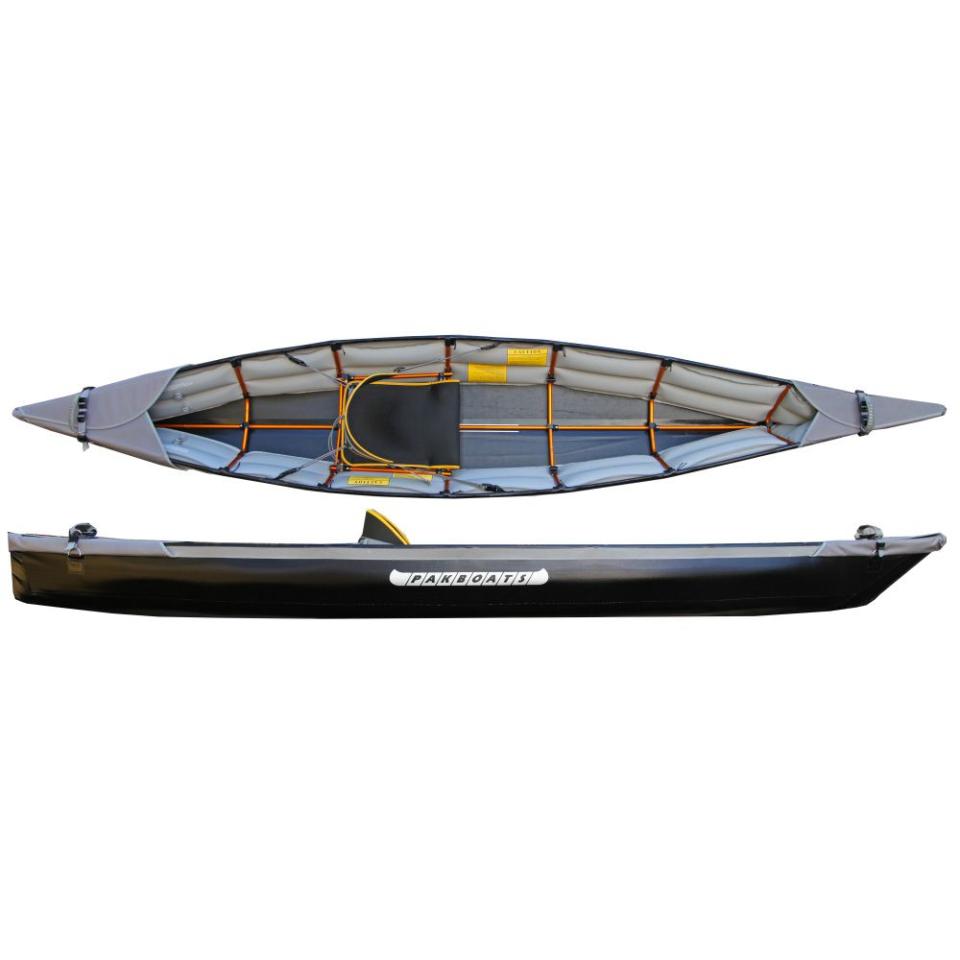
Puffin Saco
pakboats.com
$3525.00
Haven TT
It's an incredible feat of engineering that Oru designers could create a tandem folding kayak that can comfortably seat two paddlers and glide straight enough that the paddlers won’t hate each other.
The pronounced lines on the hull make the Haven TT a tracking machine that not only holds a line, but can really get going with two sets of paddles cranking. It’s 33 inches wide, which makes it very stable to compensate for the inevitable extra movement that comes with any tandem experience. The extremely roomy 20- by 90-inch cockpit makes it easy for two paddlers to get in and out as well.
And when you’re done, fold it up into a 34- by 17- by 29-inch box to bring home. It’s only 41 pounds – that’s very light for a 16-foot tandem kayak. Basically, the Haven TT makes every aspect of the tandem kayaking experience as easy as it could possibly be.
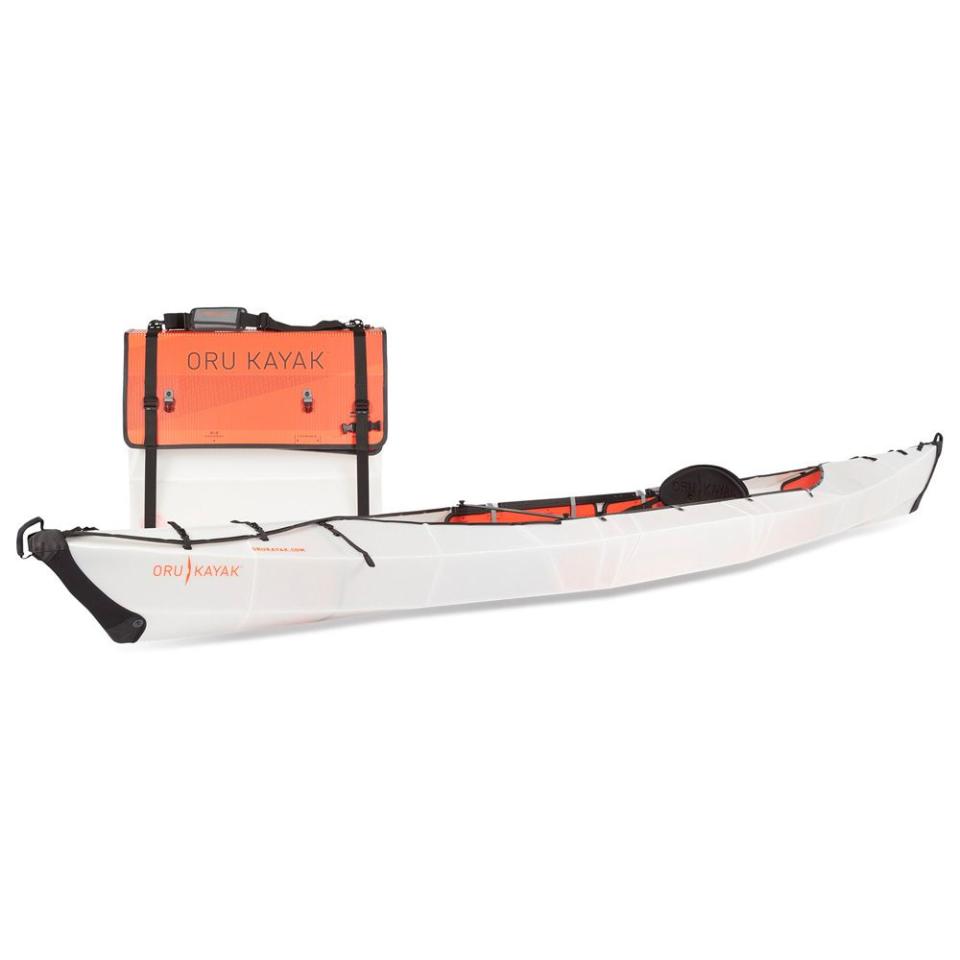
Haven TT
rei.com
$1999.00
490 Classic
Folding kayaks are relatively new to mainstream outdoor culture, but legacy manufacturers like Klepper have been making them for decades. Hannes Lindemann crossed the Atlantic in a Klepper folding boat in the mid-1950s and, after having a chance to paddle around the shores of northern Washington state in one, I’d be tempted to use the craft to follow.
The 63-pound boat took me over 25-minutes to set up on the beach due to the intricacies of its internal frame, but once I got out and cranked efficient straight strokes in choppy water, I had a hard time complaining.
At 16 feet, the Aerius 490 Classic is extremely rigid and tracks like a champ. It features an ash and birchwood frame, with a cloth TPU cover that helps deliver a smooth and stable ride, even in choppy waters.
Its impressive 660-pound capacity allows you to carry a large amount of gear for a multi-day adventure. This is an expensive boat, but the fact that it delivers a hard shell-like performance in a folding form factor could save the right boater from purchasing two crafts.
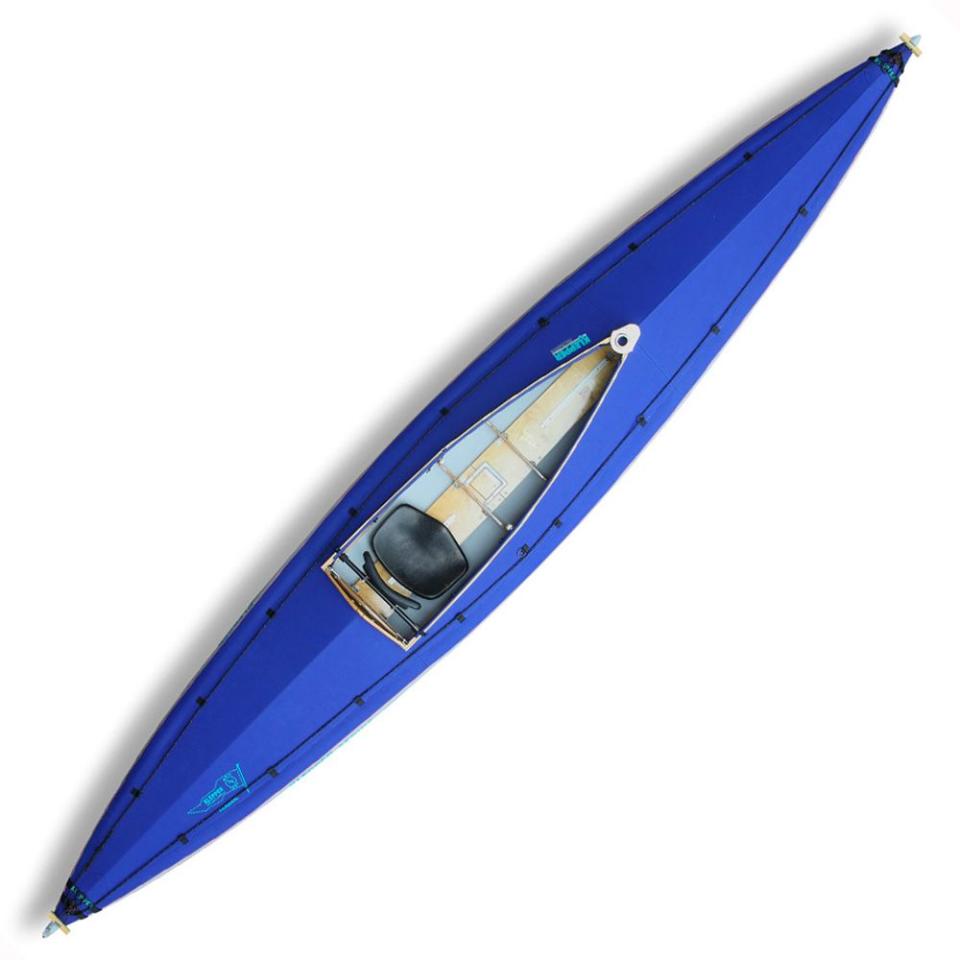
490 Classic
klepper.com
$4795.00
2.0
The Trak 2.0’s incredible rigidity-to-weight ratio pushes the boundaries of what you can expect of a folding kayak. If I were to bring a boat for a touring trip that involved international travel, the 2.0 would be my choice, thanks to its remarkable ability to handle rough water.
The secret to its high performance? It features a carbon fiber and aluminum frame that, coupled with a hydraulic tensioning system, allows you to stretch the outer urethane tightly over the sturdy, lightweight bones of the craft. It doesn’t hurt that it packs down to a manageable 41- by 19- by 9-inch suitcase, and weighs in at a bag-check friendly 44 pounds.
It can also shift from high rocker to low rocker mode on the fly, adjusting the height of the nose off the water, which increases the curvature of the bow so you can switch from high-performance mode to a more chill ride mid-paddle.
Even though the Trak 2.0 is one of the more expensive folding boats on the market (or will be when the first boats ship to customers in 2024), we feel confident that expert kayakers will want to take a closer look at this boat, given its sea-worthy construction and elite feature set. High-performance foldable touring kayaks are exceedingly rare finds, so we’re already hyped for this one.
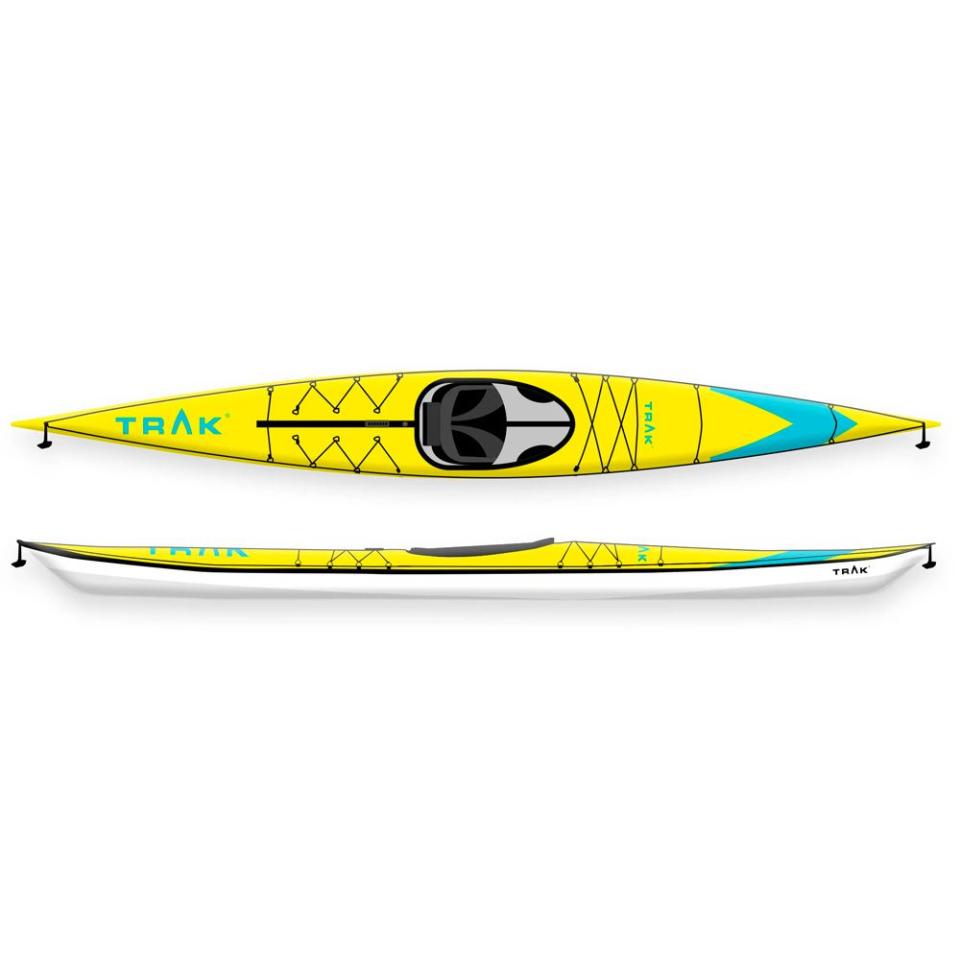
2.0
trakkayaks.com
$3850.00
What to Consider When Buying a Folding Kayak
Folding kayaks fall into two general categories—”Skin-on-frame” models come together by stretching a plastic skin over a plastic or metal skeleton, so you can assemble and break them down like a camping tent. There are also unibody models, where the frame and shell collapse into a smaller package. When assembled, both versions offer a rigid hull that can cut through water or “track” like a hard shell, while creating hard lines along the hull that maintain their integrity when boaters lean into turns, making the craft more maneuverable. And when you’re done, they fold up to the size of a suitcase.
Types of Kayaks
Folding kayaks are typically best suited to flatwater-oriented paddling styles. While there are specialized touring kayaks, which provide impressive capabilities for an advanced paddler, most folding kayaks are ideal for day trips on lakes, class I rivers, or protected bays.
Rec
Short for “recreational,” most folding kayaks fall into this general category. Rec boats are usually not built for speed or multi-day use and are generally wider and shorter than touring boats, detailed just below. They also usually don’t have spray skirt compatibility, which means you can’t really roll them, and they also don’t have multiple defined chambers to store gear.
Touring
Some skin-on-frame style folding kayaks can be built so solid that they can be used for big multi-day trips or open ocean crossings. Make sure to look for the ability to use a spray skirt, and that you have the skill of a strong roll, if you are interested in buying a foldable touring kayak for an ambitious trip.
Tandem
Perhaps the most impressive engineering feats in the folding kayak world are the boats made for two or more paddlers that still fold down into a portable package. Tandem folding boats can facilitate excellent day trips for two friends or an adventurous couple and paddle impressively well on the water.
Size
The folding kayaks we evaluated varied in length from 8- to 16-feet unfolded, most of which packed down into a container about the size of a check-in suitcase. Given that most models pack down to around the same size, longer kayaks generally have more folding components, which could potentially create more points of failure in the field. That said, a longer kayak will track better in the water.
Assembly
It always takes time to learn the process of setting up and breaking down a folding kayak. Even a boat with an intuitive assembly process will require some practice to set up quickly. We’d suggest looking up YouTube videos of how to set up a kayak before you buy it so you know what to expect.
For the most part, unibody folding kayaks come together with fewer steps than the skin-on-frame style options, which will save most boaters a few minutes during setup.
Materials
Skin-on-frame folding kayaks depend on dense waterproof plastics like PVC strung over a wood frame or lightweight metal tubing to create the structural integrity of the boat. Unibody folding kayaks are made with lightweight plastics to create a solid hull that paddlers sit in to remain afloat.
Skin-on-frame models usually balance weight with durability, so you should keep your eyes open for a skeleton made from materials that are both light and strong, such as carbon fiber, kevlar, and aluminum. Based on our testing, the plastics used in unibody models all perform similarly, so you don’t need to be quite as discerning.
Weight
You should look for a foldable kayak that’s light enough for you to comfortably carry around. A sweet folded-up boat can become a defacto coffee table if you can’t comfortably get it out of your living space and into a vehicle to go boating on your own. We recommend looking for a kayak that weighs somewhere from around 30- to 50-pounds.
We also recommend checking weight capacity, or the maximum amount of weight a boat can support, though it shouldn’t be a major concern for most people. Most folding kayaks can hold 300 pounds or more.
Folding Versus Inflatable
In addition to a folding kayak, paddlers looking for a more portable, storage-friendly option might want to consider looking at its highly packable cousin, the inflatable kayak. Where folding kayaks have a hard frame, an inflatable kayak’s structural integrity comes entirely from its air-filled hull. Inflatable kayaks are usually lighter and more portable than folding kayaks, but foldables glide more like a standard solid-body kayak.
While some high-performance inflatables can become rigid enough to track as well as a hardshell kayak, many don’t quite get there. Even when they can, their performance will suffer the moment they start to deflate. The folding kayak, by contrast, is heavy and requires more assembly than an inflatable kayak, but often tracks more smoothly and consistently.
Folding kayaks feature a skeleton or hull made from solid materials rather than air, so they are naturally heavier–usually coming in at around 30- to 60-pounds. If hauling that much weight around sounds like a problem, you should consider looking for an inflatable.

Q+A With Our Experts
What’s the best way to maintain a folding kayak?
Fully dry your kayak before stowing it away to prevent it from molding or warping. Always fold it in line with the manufacturer’s instructions, as bending the material in a way it’s not intended to be bent will damage the creases and structure of the kayak. Once it’s packed away, store it in a dry location away from direct sunlight. UV rays can damage the kayak’s materials.
Any advice on how to make the setup and tear down process easier?
There’s a steep learning curve when it comes to setting up and putting away a foldable kayak, and the process might take longer than expected for your first few attempts. If you have a yard or park nearby, it’s worth practicing in that stress-free space before you hit the water.
At the water, find a stretch of sand or grass free from sharp rocks and debris to give you plenty of space to set up without damaging your kayak. Most foldable kayak manufacturers have a video tutorial online that is more helpful to watch than the written instructions. Over time, the system becomes intuitive.
How does the performance of a folding kayak compare to a traditional kayak, and when should people consider upgrading to a standard boat?
Folding kayaks have yet to match the performance capabilities of traditional kayaks. Traditional kayaks are built from more durable materials, and their fixed shapes offer more efficient handling for the intended use, whether that be touring, surfing, or whitewater kayaking.
However, for recreational paddlers, the performance difference between a foldable kayak and traditional kayak might not be large enough to warrant the additional storage space and transport logistics a traditional kayak requires. A foldable kayak is a great way to get a feel for how often you’ll kayak.
If you feel stagnant in the conditions you can paddle in due to the limits of your foldable kayak, then it might be worth upgrading to a traditional kayak.
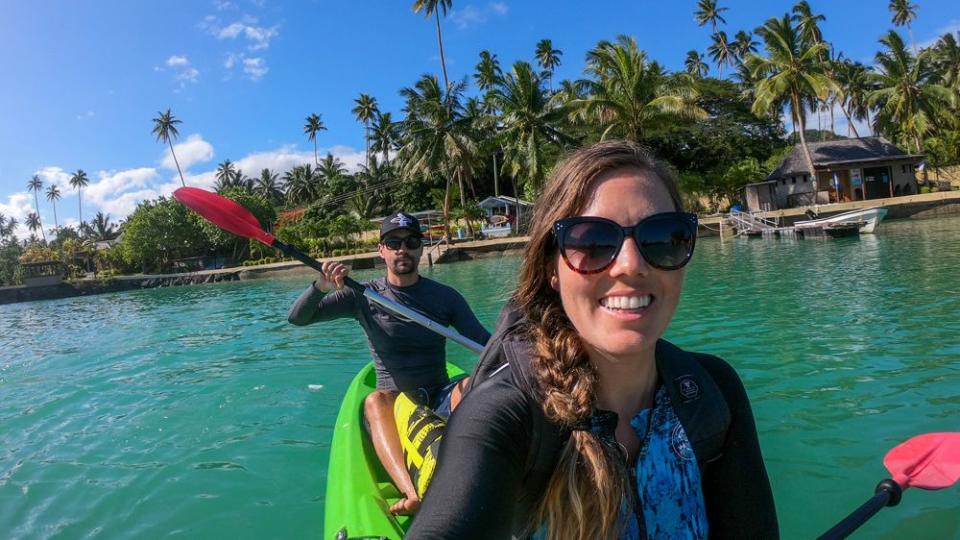
You Might Also Like

